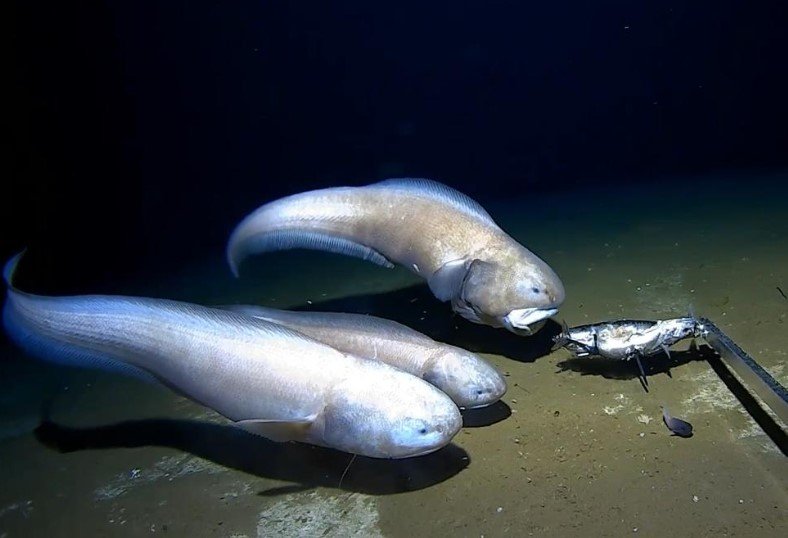Scientists have captured video footage of a fish swimming at an astonishing depth of 8,336 meters (27,349 feet) in the Izu-Ogasawara trench, south of Japan. The fish, an unknown species of snailfish belonging to the genus Pseudoliparis, is the deepest living fish ever recorded by humans.
The discovery of the deep-sea snailfish
The video was taken by an autonomous deep-ocean lander, a device that can be deployed from a ship and sink to the bottom of the ocean, where it can record images and collect samples. The lander was part of a joint expedition by the University of Western Australia and the Tokyo University of Marine Science and Technology, which explored the deep trenches around Japan in the north Pacific Ocean from September to November 2023.
The expedition aimed to study the diversity and distribution of deep-sea fish in different trenches, using baited cameras and traps. The researchers were surprised to find a snailfish swimming at such an extreme depth, as they had previously observed them only up to 8,178 meters (26,831 feet) in the Mariana trench, the deepest point on Earth.
The snailfish was a small juvenile, which may have helped it survive the immense pressure and cold temperature at that depth. The researchers also managed to catch two snailfish specimens at a slightly shallower depth of 8,022 meters (26,319 feet) in the nearby Japan trench. These were identified as Pseudoliparis belyaevi, a species that was first described in 2017 from specimens collected in the same trench.

The remarkable adaptations of snailfish
Snailfish are a diverse group of fish that can be found in various habitats, from shallow waters to polar regions. They have soft, gelatinous bodies that lack scales and swim bladders, which help them cope with the high pressure and low buoyancy in the deep sea. They also have large mouths and stomachs that allow them to feed on small crustaceans and other prey that are abundant in the trenches.
Snailfish are among the few fish that can survive below 6,000 meters (19,685 feet), where most other fish cannot tolerate the extreme conditions. They are also very resilient and can live for several years, despite their harsh environment. Snailfish are considered to be indicators of deep-sea biodiversity and ecosystem health, as they reflect the availability and quality of food resources in the trenches.
The implications of the record-breaking observation
The video footage of the snailfish at 8,336 meters (27,349 feet) is a remarkable achievement for deep-sea exploration and science. It demonstrates the capabilities and limitations of current technology and methods for studying the deep ocean, which covers more than two-thirds of the planet’s surface but remains largely unexplored.
The observation also challenges our understanding of how life can adapt and thrive in extreme environments. It suggests that there may be more undiscovered species and biological phenomena in the deep sea, waiting to be revealed by future expeditions. The researchers hope that their findings will inspire more interest and investment in deep-sea research, which can contribute to our knowledge of marine biodiversity, evolution, ecology, and conservation.



































